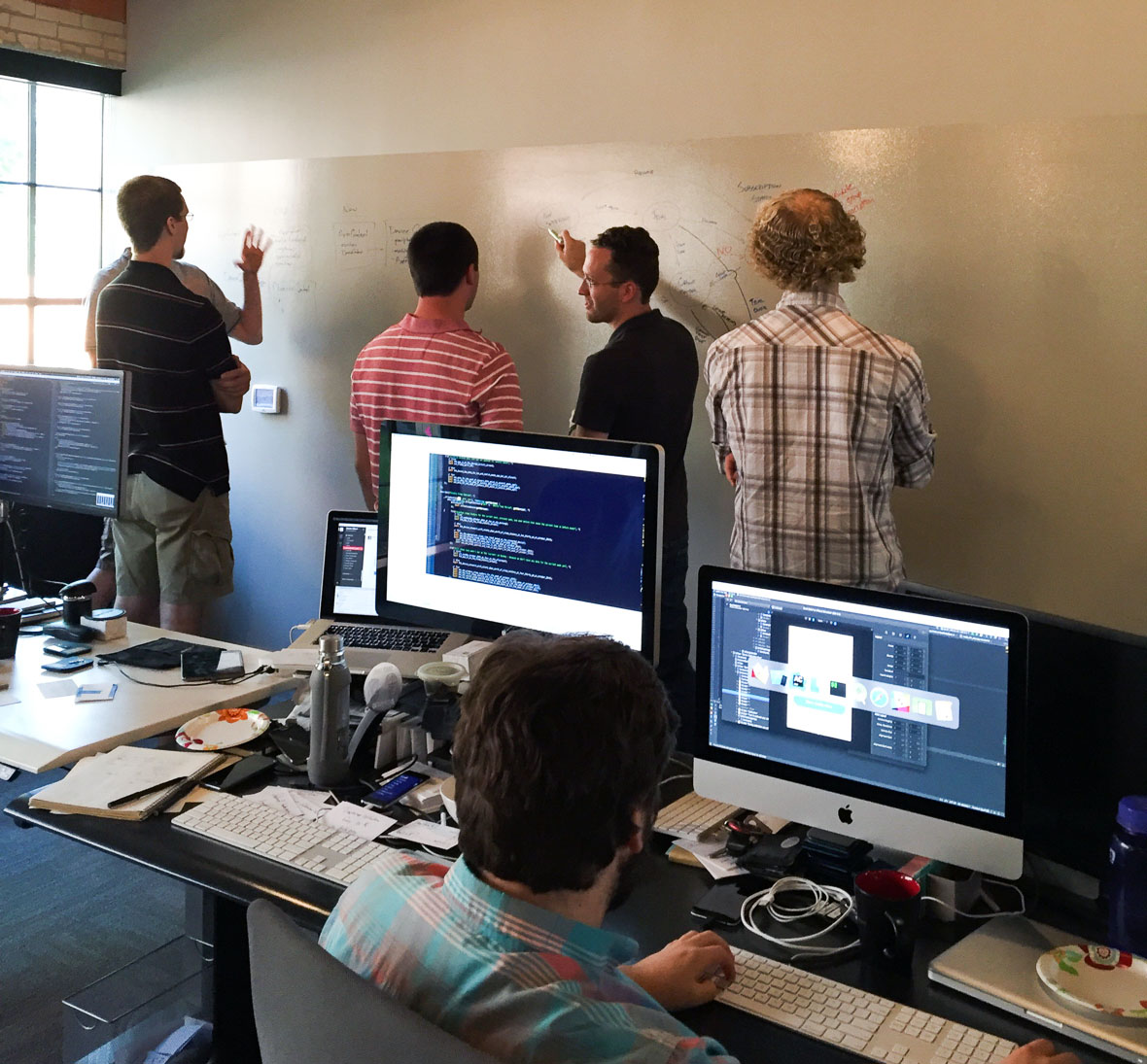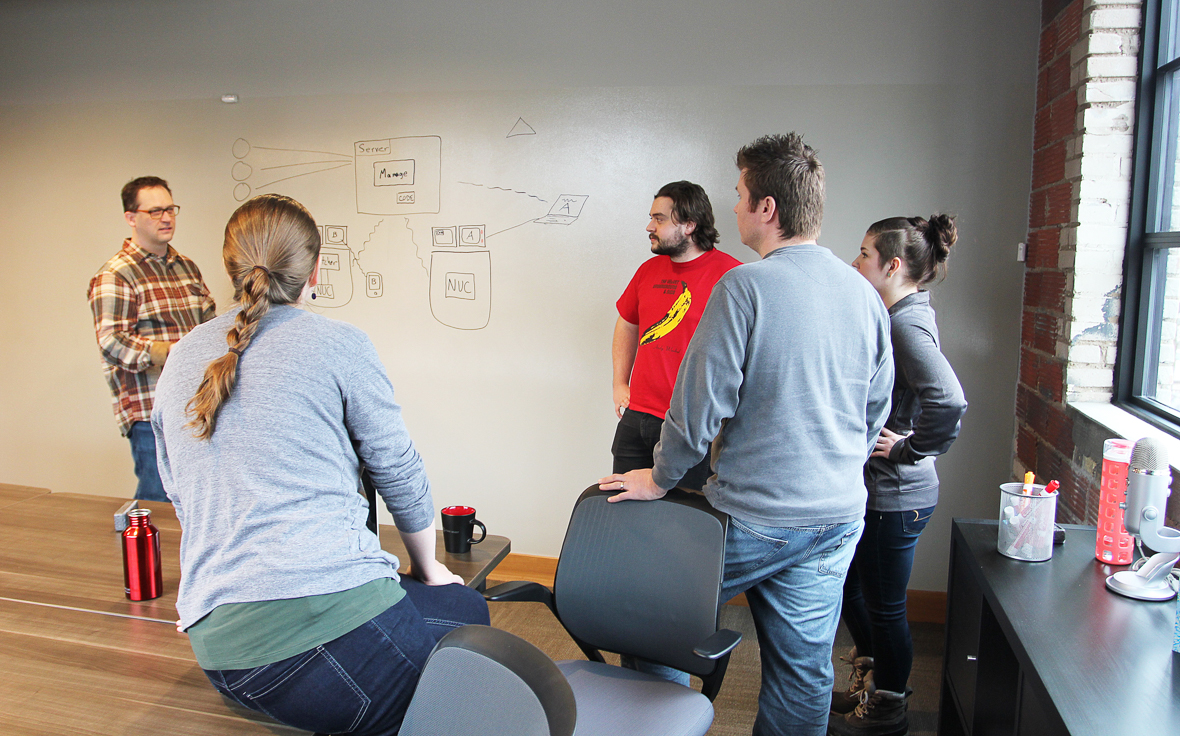Over the years of working on many different projects with many different people, I’ve noticed that the biggest problems seem to arise from a lack of a shared understanding. To overcome these hurdles and become more productive, we need to gain empathy for each other and the challenges we face.
Just to be clear, empathy is different from sympathy:
- Sympathy is feeling compassion or even pity for someone else because you recognize that they are in a difficult or troublesome situation.
- Empathy is an understanding and connection at a deeper level. Empathy involves being able to actually put yourself in another person’s shoes to understand what they are feeling and the dilemmas they are facing.
Empathy Makes Teams Work
Because empathy is about understanding other people’s perspectives, it enables us to be much, much more effective team members and problem solvers.
StartEmpathy.org summarizes it well:
[Empathy] means the ability to grasp the many sides of today’s complex problems and the capacity to collaborate with others to solve them; it means being as good at listening to the ideas of others as articulating your own; it means being able to lead a team one day, and participate as a team member the next.
When team members don’t have enough empathy for each other, it’s hard for them to work collaboratively and find the right path forward. What’s more, a lack of empathy can lead to disagreement, frustration, and ill feelings that can erode the trust and bonds that hold a team together.
Having a sufficient level of empathy is not just a one-time thing. It’s a constant endeavor that requires all team members to reach out to one another and ask questions. This approach can help you maintain empathy through all of the ups and downs of a product development cycle.
Process Doesn’t Lead to Empathy
Unfortunately, when dealing with poor team dynamics, many teams ignore the interpersonal dimension and fall into the common trap of adding process.
This one-size-fits-all approach seems easier and quicker to implement, but it can actually make the lack of empathy worse. Since adding process decreases sympathy and breaks down the cohesiveness of a team, it can actually make problems worse and decrease transparency. This may lead to an “us and them” feeling, rather than promoting and strengthening the sense of being part of a team.
I stand with the writers of the Agile Manifesto, a group of software developers who believed that people—not process—were the key to solving problems:
We are uncovering better ways of developing software by doing it and helping others do it. Through this work we have come to value:
- Individuals and interactions over processes and tools
- Working software over comprehensive documentation
- Customer collaboration over contract negotiation
- Responding to change over following a plan
Adding process to solve people problems can be destructive to the key relationships in a team, since it tends to create a more binding contract across roles of team members. This may further drive people apart and downplay the humanity that makes a team click.
Allowing the team to work through challenges together builds trust and better synergy, leading to a much more fulfilling and cohesive team.

Getting Together
Challenges and problems are unavoidable in any type of project. The way we face up to problems and deal with them as a team determines how good of a team we can be.
- Find Shared Goals – Consolidating ownership of team goals is absolutely required. When you hit roadblocks, it helps you figure out how to move forward. You succeed or falter as a team.
- Share Responsibility – Putting blame on any one individual’s shoulders can be a natural, yet destructive, pattern in teams. By shouldering the burdens that any one of us faces as a team, we can bolster confidence, maintain trust, and protect the health of the team.
- Work Together (Literally) – The more physically separated teams are from each other, the more they tend to fall into these destructive patterns of behavior. Having distributed teams is difficult, but unfortunately, it’s a reality in many situations. At Atomic, we have found that making focused efforts to co-locate, even occasionally, facilitates deeper understanding of each team member’s contributions and breeds trust–especially when a team is facing difficult challenges.
Examples of Empathy in Action
Example 1: Technical debt is getting in the way
The developers are continuously butting up against a thorny part of the system. There’s a reluctance to change, due to the amount of work involved or a fear that making changes could break things. Team velocity has slowed dramatically.
The development team needs to cut their losses and be transparent about the roadblocks that keep hampering progress. Bringing the Product Owner into the loop can help the team evaluate the issue and create a plan to deal directly with the problem.
Facing up to reality is crucial. It helps you assess and deal with the damage as a team, evaluating tradeoffs with all of the proper people at the table.
Example 2: Tweaking the system doesn’t seem to end…
Development is spending a lot of time tweaking a part of the system in order to make it acceptable. This is taking a toll on the calendar/delivery timeframe.
This situation frequently arises when the team lacks either a goal or an understanding of the complexities involved. By working with the Product Owner, you can come up with realistic and quantifiable success criteria that will show you where you are heading, and more importantly, when you have arrived. Everyone loves to have a light at the end of the tunnel!
Example 3: A team member is constantly being pulled in different directions
You are on three different projects, and emergencies pop up all the time. This makes you change focus constantly, and these repeated derailments keep the rest of the team from making progress.
This unfortunately happens much too often. Because different projects are run by different people, it’s hard for any of them to understand that you can’t give them all priority. Something needs to give!
To clarify your overcommitment, get together with the Project Managers/Product Owners. Remind them that you are human and have ramp-up/ramp-down needs when transitioning. With each stakeholder, figure out how you should be scheduling your time so that expectations are set appropriately. We all experience overload from time to time, and we need to be transparent when it happens.
These are a few examples of situations where team communication and empathy can help pull you out of the weeds and improve your focus and productivity. I would love to hear what strategies other teams and organizations use to facilitate team bonds, joint ownership, and empathy.

